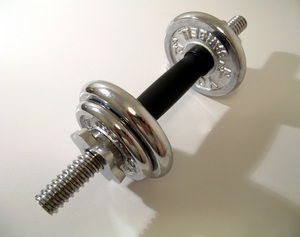I work in the IT department of a fairly large local government entity that has several hundred computers in use. On those machines, about 90% of them use Microsoft Office software. We’ve had so many requests for the new Office 2007 that we decided to start upgrading everyone. They all had previously been using Microsoft Office 2003. Before that, they were using either Office XP or Office 2000. Since we began the upgrade process, our department has encountered a myriad of technical problems.
At first, our goal was to push out Office 2007 using SMS, or Systems Management Server, which is a network tool made by Microsoft. It is used for remotely deploying software so that people like me don’t have to physically travel to each computer whenever we decide to update everyone. I’ll admit that we had to jump a few hurdles to get SMS working, but that’s because none of us had any experience with it before. After getting past that part, we quickly realized that the problem was with Office 2007.
I’ve worked in the computer industry for ten years now, and one thing I have learned is that Microsoft products are best when you install them fresh. When you upgrade from a previous version, it tends to cause all kinds of problems. If you don’t believe me, just ask about half the people who upgraded from Windows XP to Windows Vista. As we started to deploy Office 2007, we discovered that it was no different when it came to upgrading.
When we configure a brand new computer that had no previous version of Office installed, the process would only take about ten minutes to complete. Our department recently had to configure over 150 new laptops and not a single one of them had a problem with a fresh install of Office 2007. The problems started coming up when we tried upgrading people from Office 2003 to Office 2007.
Because we wanted to install the software in the background, while the user was still on the machine, we made what is called a ‘silent install’ process. These are pretty easy to configure and more information can be found on Microsoft’s website if you want to try it yourself. I’d estimate that 3 out of every 5 silent installs had some kind of problem. Either they would take too long, or just wouldn’t complete.
If you have a previous version of Office installed on your computer, the Office 2007 install process is supposed to first remove that old version before installing the new one. On more than half of our computers, this simply did not work, or it took more than an hour to complete. That’s just ridiculous. We even tried completely uninstalling Office 2003 and then running Office 2007 as a fresh install, and on some of those machines it still took nearly 45 minutes to finish. Apparently, uninstalling Office 2003 doesn’t remove everything.
While the Office 2007 silent install was running, we would open up the Windows Task Manager and look at the running processes. We would see the main setup.exe program in memory, along with another file called OSE0000.exe or OSE00001.exe, which was part of the Office install. When you first ran the program, these would spike the CPU usage and the install would begin. On the machines that would take nearly an hour, these two processes would sit idle for nearly half an hour before the install would complete. While those programs sat dormant, the hard drive was not running and no other processes were taking up memory. It’s like something was holding it up, but we don’t know what. Eventually, the install would complete.
On some of the machines that were taking too long, we tried running a standard install that wasn’t silent, and it seemed to go a lot faster. Other than one showing you the install progress and the other running quietly in the background, both install processes were installing the exact same software. We checked and double checked to make sure of this, and even rebuilt our silent install package several times to ensure there were no mistakes.
After the Office 2007 installation was complete, we encountered another big problem. If the computer ever had Office XP installed, it would conflict with Office 2007, so much that it would try to run some kind of installer every time you opened an Office 2007 program like Word or Excel. The only way we found to correct this was to download an Office XP Uninstaller program from Microsoft’s website. There was some kind of issue with Office XP not uninstalling properly and we found out via the Office 2007 install just what kind of issues those were.
Out of all our computers, we had one machine that simply would not let us install Office 2007 at all! Office 2003 would install and run fine, but no matter whether we tried the silent or standard install package for Office 2007, it would quit after a few minutes. No errors were given and no log files were created to diagnose the problem. The only thing we know to do is reinstall Windows, since something must’ve been corrupted in the system registry.
The purpose of me writing all of this is to give a warning to people out there who automatically think that because something is new, it is better. Microsoft Office 2007 is a lot different than the previous versions, and you should really think about whether or not you need to update so soon. After all the problems we had trying to get it on the computers at work, I can only imagine the kind of trouble people might be having at home. Consider yourself warned.


